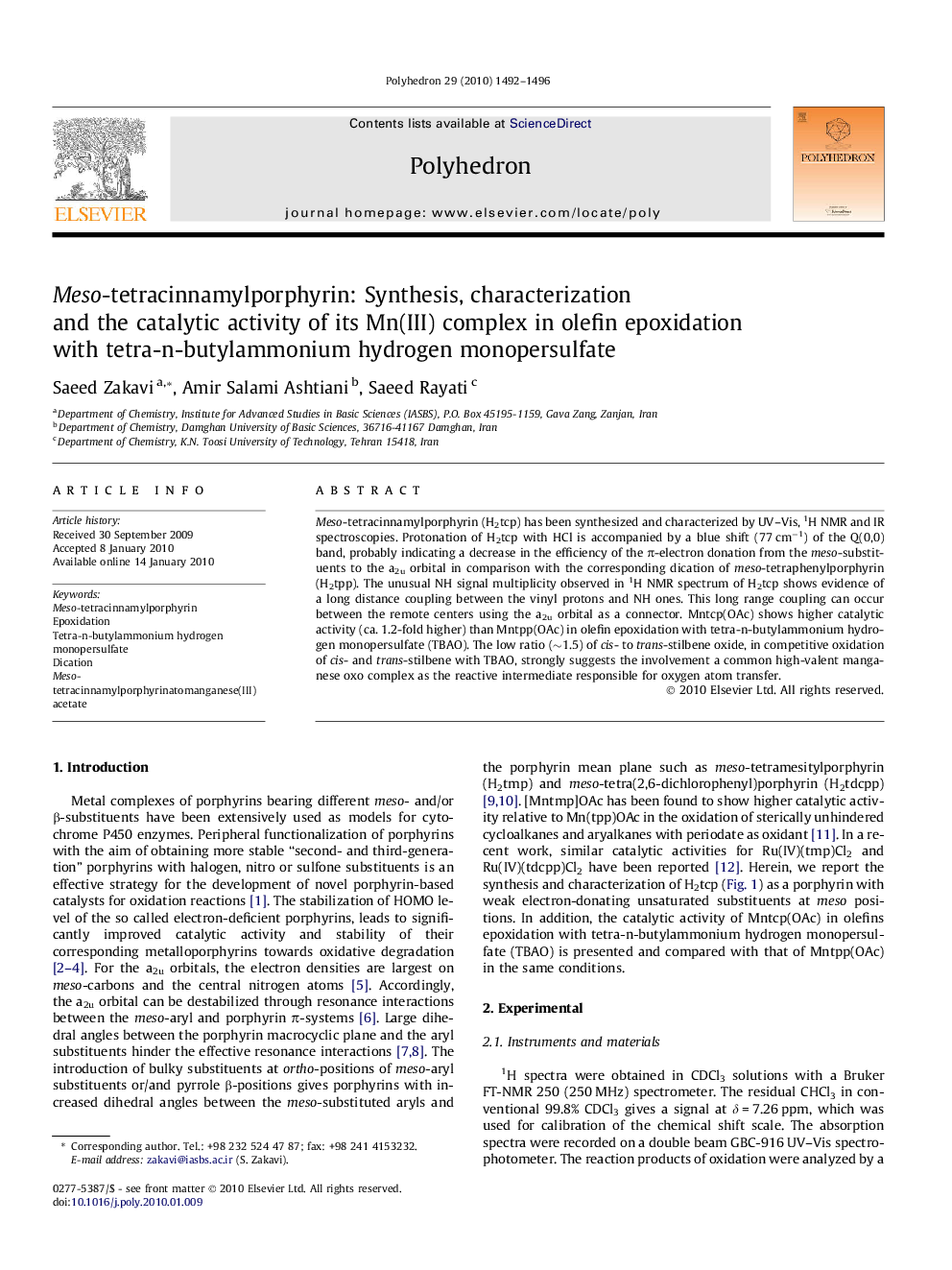| Article ID | Journal | Published Year | Pages | File Type |
|---|---|---|---|---|
| 1336728 | Polyhedron | 2010 | 5 Pages |
Meso-tetracinnamylporphyrin (H2tcp) has been synthesized and characterized by UV–Vis, 1H NMR and IR spectroscopies. Protonation of H2tcp with HCl is accompanied by a blue shift (77 cm−1) of the Q(0,0) band, probably indicating a decrease in the efficiency of the π-electron donation from the meso-substituents to the a2u orbital in comparison with the corresponding dication of meso-tetraphenylporphyrin (H2tpp). The unusual NH signal multiplicity observed in 1H NMR spectrum of H2tcp shows evidence of a long distance coupling between the vinyl protons and NH ones. This long range coupling can occur between the remote centers using the a2u orbital as a connector. Mntcp(OAc) shows higher catalytic activity (ca. 1.2-fold higher) than Mntpp(OAc) in olefin epoxidation with tetra-n-butylammonium hydrogen monopersulfate (TBAO). The low ratio (∼1.5) of cis- to trans-stilbene oxide, in competitive oxidation of cis- and trans-stilbene with TBAO, strongly suggests the involvement a common high-valent manganese oxo complex as the reactive intermediate responsible for oxygen atom transfer.
Graphical abstractSynthesis and characterization of meso-tetracinnamylporphyrin (H2tcp) as a fully conjugated porphyrin is reported. The blue shift of the Q(0,0) band of H2tcp upon diprotonation with HCl shows evidence of a decrease in the efficiency of the π-electron donation to the porphyrin core in comparison with meso-tetraphenylporphyrin (H2tpp). Mntcp(OAc) shows greater catalytic activity than Mntpp(OAc) for the oxidation of olefins with tetra-n-butylammonium hydrogen monopersulfate.Figure optionsDownload full-size imageDownload as PowerPoint slide
